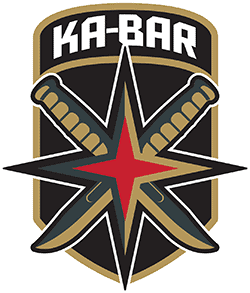(This site is reader-supported. When you buy something using retail links on our articles, we may earn a small commission. As an Amazon Associate I earn from qualifying purchases.)
KA-BAR is a highly recognized brand to which many older adults are sentimentally attached even today. This is perhaps because the brand has the impression of going beyond social backgrounds and generations. Your grandfather may have a KA-BAR knife brought from WWII’s filthy trenches, or you may have one to treasure its reliability to protect yourself or others during a civil war.
Apart from its rich history, the brand has produced a variety of knives since its inception in 1897. Thus, identifying the exact manufacturing date of any KA-BAR knife requires you to know about its historical journey of over 120 years featuring hurdles and interesting chronicles regarding its different knives.
Ways to Date a KA-BAR Knife
Tang Stamp or Logo to Date a KA-BAR Knife
This is the easiest way to find the age span of a KA-BAR knife. The company has changed the tang stamp many times over the years. Collectors consider these alterations to know the age of a particular knife.
- During its early days of inception from 1897 to 1909, the stamps were “Union Cutlery Co., Tidioute, Pa,” “Union Cut. Co., Tidioute,” and “Union Cut. Co., Olean N.Y.”. The latter was first used in 1909.
- During the period 1912 to 1925, “Union Cut. Co.” was engraved in arc shape over the word “U.S.A.” or “Union” was followed by “Stainless.”
- From 1912 to 1920, “Tidioute CUT. CO” in a straight line followed by “OLEAN, N.Y.” and “U.S.A.” respectively on a new line was a standard stamp.
- From 1912 to 1930, “UNION CUTLERY CO.” in a straight line followed by “OLEAN, N.Y.” on the following line was standard.
- From 1914 to 1926, the stamping of “UNION” in a round, rectangular box was common.
- From 1920 to 1930, the stamp was “KEENWELL CUT CO.” in a straight line followed by “OLEAN, N.Y.” in the following line. From 1928 to 1932, “KA-BAR” followed by a model number featuring the manufacturing date was common.
- This stamp was changed from 1930 to 1940 to “KA-BAR,” etched in a straight line and “U.SA.” engraved below it.
- The knives made between 1935 and 1945 had a stamping of “OLCUT,” after which “STAINLESS STEEL” or “UNION CUT CO.” and “OLEAN, N.Y” were written exactly below, each on a new line.
- From 1930 to 1945, the knives showed a stamping of “KA-BAR” followed by “U.S” below it.
- 1930 to 1965 had the stamping of “KA-BAR” in a straight line and “STAINLESS” written below it.
- The stamping changed from 1950 to 1970 to “Kabar,” ending with an unfilled star or just “KA-BAR.”
Here is an image to help you date KA-BAR knives using the Tang-Stamp

Alternatively, one could do these as well.
- Looking for the Serial Number: A KA-BAR knife usually has a model or a serial number of two or four digits. You can then look up the number in an antique cutlery book or in the brand’s catalog to know the type and age of that specific knife.
- Exploring the Print Items: These items include old catalogs, magazine ads, books dedicated to knives, and a brochure that may have come with your knife. These are reliable sources to know the age or manufacturing year range. This is because they typically will have images and other information. They are handy, especially when the knife in your hand is worn or broken. However, even the KA-BAR collectors feel it challenging to find the specific age of a knife by just glancing or examining it. Thus, they also refer to one or more print materials.
- Looking on the Internet: There are a couple of forums and portals dedicated to vintage or commemorative knives, especially by collectors. These are also reliable to know about your knife’s age. You can even look for antique shops or local knife collectors to get the information you are looking for.

Hi, I am Jay. I am the creator of Knife Guides, your one-stop site for everything related to knives. I am a computer engineer by profession, knife aficionado by passion. Here I work with a group of people who’ve always had a passion for knives and blades. Over the years we’ve kind of become experts and decided to share our knowledge and ideas. I am also an avid hiker and enjoy offshore gamefishing.


